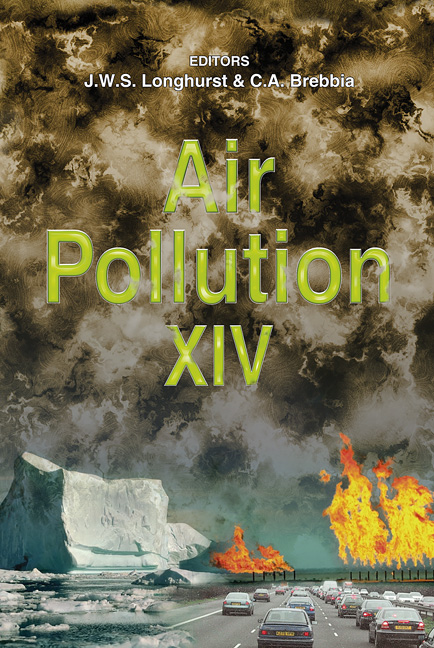Change Of Photochemical Oxidant Concentration By Increase Of VOCs Emission From Vegetations Due To Global Warming
Price
Free (open access)
Transaction
Volume
86
Pages
11
Published
2006
Size
542 kb
Paper DOI
10.2495/AIR060451
Copyright
WIT Press
Author(s)
A. Kondo, A. Kaga, Y. Shimoda, Y. Inoue, D. Narumi, H. Bao, T. Machimura, M. Tada & K. Sakaguchi
Abstract
VOCs emission experiments were conducted in a growth chamber in which temperature and luminous intensity can be controlled. Temperature was set at the typical summer temperature in Osaka and luminous intensity was set at 1000(µmol/m2/s) during daytime. The standard VOCs emissions from four representative Japanese plant species (Cryptomeria japonica, Chamaecyparis obtuse, Pinus densiflora and Quercus serrata) and rice plants were measured. The species distributions and their leaf biomass densities in the Kinki district were determined by the forest database and the use of a geophysical information system. Consequently, the detail emission distributions of isoprene and monoterpenes were estimated. Photochemical oxidant concentration was simulated by considering VOCs emissions from forests and paddy fields that changed with temperature and luminous intensity. The simulated results of NO, NO2 and O3 reasonably agreed with the observed data at 12 monitoring locations. The numerical experiment of temperature increment by 1oC that causes both the increment of VOCs and the promotion of photochemical reaction, could represent the recent increase of oxidant concentration by global warming. Keywords: photochemical oxidant, isoprene, monoterpenes, growth chamber experiment, numerical simulation. 1 Introduction It is well known that reactive volatile organic compounds (VOCs) are emitted from vegetation, including urban landscapes, agricultural crops and forests. It is important to investigate VOCs emission amount and lots of inventories of VOCs
Keywords
photochemical oxidant, isoprene, monoterpenes, growth chamber experiment, numerical simulation.





